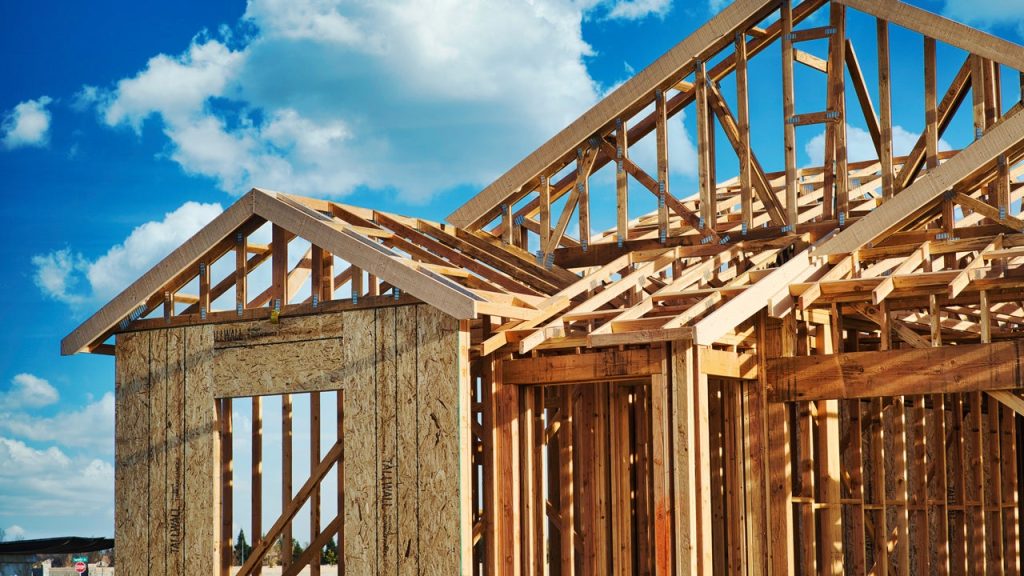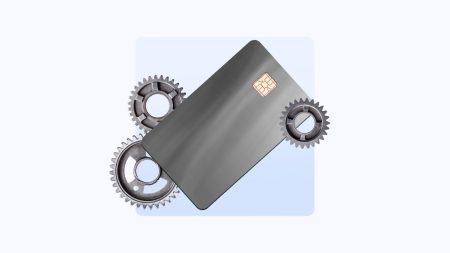Alexandr Ivaschenko/Adobe Stock
Key takeaways
- Building a home is often cheaper than buying an existing one, especially with today’s high home prices.
- Homes with prefabricated, factory-built features are less expensive to build than traditional stick-built homes.
- Architectural style can also impact the cost of construction, with simpler designs and materials being more affordable than custom options.
You’ve searched the home listings, but alas, you’ve come up empty. Sure, some homes have a few of the features on your must-have list — but ultimately, you haven’t found a dream home that checks every box. You might even be considering building a home from scratch that meets your needs and has every amenity you desire.
Building your own home has many pluses, but it can also cost a lot of time and money. Fortunately, there are ways to economize and still get what you want. Here’s what to know about the cheapest ways to build a house.
How much does building a home usually cost?
Data suggests it may actually be cheaper to build a new home than to buy an existing one. According to HomeAdvisor data from 2023, the average cost to build a house in the U.S. is $318,634. By contrast, the median home price in the U.S. was $416,700 as of August 2024, according to the National Association of Realtors.
Prices vary widely across the country, though, so how much house you can afford to build will depend on your location. And keep in mind that supply-chain shortages can unexpectedly drive up costs for everything from lumber to appliances.
Some of the most significant factors in the cost of building a new home include:
- Size: As a general rule, the larger the home, the greater the costs. Most home builders base cost estimates on a home’s square footage. HomeAdvisor puts the average cost to build a new home at $150 per square foot. (For a 2,000-square-foot home, that comes to $300,000.)
- Design: A simple, single-story layout is more cost-efficient than a custom design with many corners and intricate roof lines. That’s because every angle requires the building material — like lumber, drywall or roof shingles — to be cut to fit, with the excess getting thrown away.
- Finishes: High-end touches like exotic-stone kitchen countertops, imported floor tiles and custom built-ins can make your home stand out, but they will come at a higher cost.
- Demand: Building prices are typically higher where demand is greater than supply. In rapidly growing areas, more demand for materials and contractors drives up prices.
- Land: When you build a home, you’ll also need a place to put it. Buying land to build on is an extra expense on top of building costs. Land costs will vary depending on location and lot size.
Cheapest ways to build a house
Not all building methods are created equal. Rather than opting for a traditional stick-built house — a custom structure that’s entirely built-on-site — an alternative type of structure can save you money.
Prefabricated homes, often referred to as “prefab,” cost much less to build. These homes are made at least partially in a factory, with some level of assembly or construction at the home site. You can still customize a prefab home, although not as freely as a regular custom-built house. The most common types of prefab homes are modular and manufactured:
- Modular homes are constructed on-site in modular units, with materials delivered from a factory. They are permanent structures that cannot be moved once they are built. According to HomeAdvisor, the cost to build a 1,800-square-foot modular home averages $270,000.
- Manufactured homes (once referred to as mobile homes, because the finished product can be moved) are built and transported in sections: single-wide, double-wide and triple-wide. Unlike modular homes, which must adhere to local building codes, manufactured homes must meet federal building codes issued by the U.S. Department of Housing and Urban Development.
Cheapest types of homes to build
The architectural style and type of home you choose can also significantly impact how much it costs to build. For example, a Mediterranean-style home with two floors and a roof of fancy terra-cotta tiles will be more expensive to build than a similarly sized single-level ranch with a conventional roof. Similarly, the symmetrical floor plan and square silhouette that characterize colonial-style homes make them less expensive to build than, say, an elaborate and irregularly fronted Victorian.
“Learn to love the box,” says Pennsylvania architect Lee Calisti, a strategic construction advisor at Real Estate Bees, a platform for industry professionals. “The box is the most straightforward and affordable thing to build.”
Here are some of the most affordable housing styles to build:
- Prefab homes: Modular or manufactured homes are more affordable because their structures are partially built off-site, rather than building a fully custom house on-site.
- Tiny homes: A tiny home may be the cheapest type of house to build. These extra-small but thoughtfully designed structures average $45,000, according to HomeAdvisor, and you can even buy them in ready-to-assemble kits. Edna and Juan Forero of Jupiter, Florida, built a tiny home for their daughter to live in while enrolled in graduate school. The couple compared the costs against the rental rates for apartments. “While our build cost was similar to the cost of 18 months of rent after school finished, she would have a permanent home to live in and take wherever she goes in the future,” said Edna.
- Barndominiums: As the name implies, a barndominium combines the features of a barn and a condominium. They can be cheaper and faster to build than traditional homes because the exterior structures also typically come in a kit. HomeAdvisor puts the average cost to build a 2,400-square-foot “barndo” at $300,000.
- ADUs: An accessory dwelling unit, or ADU, is a secondary building or apartment on the same property as a main single-family home. The cost of building will vary greatly depending on whether it’s attached (as in a basement or above-the-garage apartment) or detached (like a guest house in the backyard).
- Ranches: Single-story ranch-style homes are one of the most cost-efficient traditional types of home to build. The ranch style’s simple rectangular layout reduces complications in construction and costs around $315,000 on average to build, per HomeAdvisor.
Cheaper building materials
One of the best ways to save on building costs is to choose less expensive building materials. Consider these cost-effective options:
- Reclaimed materials: Using reclaimed materials like wood, flooring, doors and fixtures not only adds some individuality to your new home, it also can save you money. Check online resources like Facebook Marketplace and salvage stores. For Ralph McLaughlin, a retired police officer from Phoenix, finding vintage materials was a fun way to save money on his new home build: “We found deals all over the place,” he says. “We got ceramic lighting and painted them. The chandeliers were slightly damaged, but you can’t even tell, and they look expensive.”
- Prefab panels: Prefabricated panels are walls constructed in a factory and shipped to your home site. Building your interior walls in this manner can save on construction and labor costs.
- Precast concrete: Similar to prefab panels, precast concrete is poured and cured off-site and shipped to your property, reducing the need for on-site labor.
- Shipping containers: Designing a structure based around one or more old shipping containers can also cut down on building costs. Similar to prefab homes, container homes eliminate the need to fully build a house from scratch, saving some labor and material costs.
Money-saving house-building tips
Building your own home can be more affordable than purchasing a home. These cost-saving tips may help you save even more money, both upfront and in the long run:
- Keep design simple: The more complex your home design, the more costly it will likely be to create. Try to keep the basics simple — you can inject plenty of personality with your decor choices, and you can add more permanent details in the future, if you like.
- DIY where possible: Are you skilled at painting walls? Or perhaps you have a green thumb and can handle the landscaping on your own? Look for small tasks you can do yourself (within reason) to save money on hiring a pro.
- Hire a general contractor: For the big stuff, though, hiring a general contractor to oversee construction can help you avoid making costly and time-consuming mistakes. Yes, they charge a fee, but they also have access to an extensive network of skilled tradespeople and can oversee the building process with a level of expertise you likely don’t have.
- Use energy-efficient systems: Using energy-efficient building materials, including insulation and windows, can be budget-friendly in the long run. For example, installing solar panels adds an upfront cost, but it can save you substantial money over the years. Search EnergyStar.gov for details on federal tax credits and rebates that might be available to you.
Bottom line
Building a home can be cheaper than buying a home, but a lot depends on the level of customization. The best way to keep home-building costs down is to choose a modest structure, simple design and basic, non-custom materials. Being frugal doesn’t mean you have to sacrifice style completely, though. Calisti advises spending strategically and splurging where it matters most. “Public spaces such as the kitchen, dining and living room can have a higher degree of finish [as opposed to] the bedrooms and bathrooms,” he says.
Read the full article here










